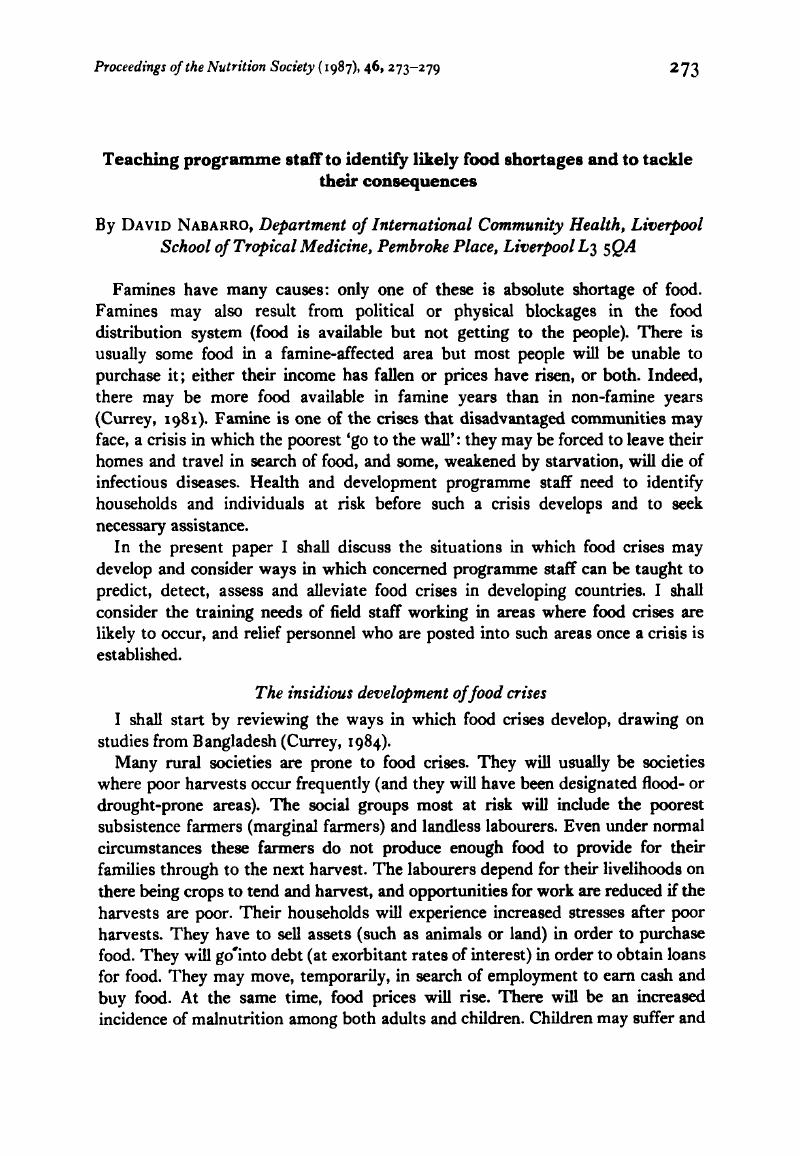No CrossRef data available.
Article contents
Teaching programme staff to identify likely food shortages and to tackle their consequences
Published online by Cambridge University Press: 28 February 2007
Abstract
An abstract is not available for this content so a preview has been provided. As you have access to this content, a full PDF is available via the ‘Save PDF’ action button.

- Type
- Discussion on ‘Famine’
- Information
- Copyright
- Copyright © The Nutrition Society 1987
References
REFERENCES
Chambers, R. (1983). Putting the Last First-Reversals in Rural Development. London: Longman.Google Scholar
Currey, B. (1984). In Famine as a Geographical Phenomenon, pp. 183–202 [Currey, B. and Hugo, G., editors]. Dordrecht: Geobooks.Google Scholar
Shears, P. (1983). Oxfam's Practical Guide to Refugee Health Care. Oxford: Oxfam Medical Unit.Google Scholar
Simmonds, S., Vaughan, P. & Gunn, W. (1983). Refugee Community Health Care. Oxford: Oxford University Press.Google Scholar




